Filter by
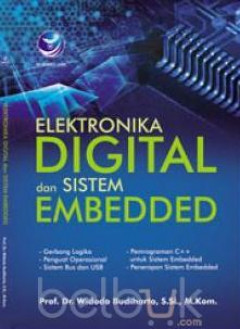
Elektronika digital dan sistem embedded
Elektronika digital dan teknologi Sistem Embedded merupakan materi yang sngat penting di bidang elektronika dan Teknologi Informasi. Kebutuhan akan mikroprosesor kecepatan tinggi namun dengan ukuran yang kompak, menghasilkan teknologi sistem embedded yang murah dan banyak diterapkan pada dunia industri ataupun hiburan. Buku ini bermaksud untuk memopulerkan teknologi digital dan sistem embedded …
- Edition
- Ed.1
- ISBN/ISSN
- 9789792968552
- Collation
- viii, 248 hlm.; ilus.; 23 cm
- Series Title
- --
- Call Number
- 621.39 WID e

Designing Embedded Hardware
Embedded computer systems literally surround us: they're in our cell phones, PDAs, cars, TVs, refrigerators, heating systems, and more. In fact, embedded systems are one of the most rapidly growing segments of the computer industry today.Along with the growing list of devices for which embedded computer systems are appropriate, interest is growing among programmers, hobbyists, and engineers of …
- Edition
- -
- ISBN/ISSN
- 9780596520939
- Collation
- xvi, 370 hal : 23cm
- Series Title
- -
- Call Number
- 004.16 CAT d
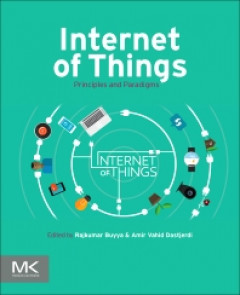
Internet of things : principles and paradigms
Contents: Part I: IoT ecosystem concepts and architectures Chapter 1: Internet of Things: an overview 1.1. Introduction 1.2. Internet of Things definition evolution 1.3. IoT architectures 1.4. Resource management 1.5. IoT data management and analytics 1.6. Communication protocols 1.7. Internet of Things applications 1.8. Security 1.9. Identity management and authentication 1.10. P…
- Edition
- 1st edition
- ISBN/ISSN
- 9780128053959
- Collation
- xxiii, 354 hal.; ilus.; 25 cm
- Series Title
- --
- Call Number
- 004.22 BUY i
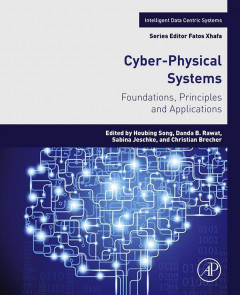
Cyber-physical systems: foundations, principles, and applications
Table of Contents PART 1 FOUNDATIONS 1. Characterization, Analysis, and Recommendations for Exploiting the Opportunities of Cyber-Physical Systems 2. Adaptive Control in Cyber-Physical Systems: Distributed Consensus Control for Wireless Cyber-Physical Systems 3. Online Control and Optimization for Cyber-Physical Systems 4. Energy-Harvesting Low-Power Devices in Cyber-Physical Systems 5.…
- Edition
- 1st edition
- ISBN/ISSN
- 9780128038017
- Collation
- xxx, 484 hal.; ilus.; 23 cm
- Series Title
- Intelligent data centric systems
- Call Number
- 629.8 SON c
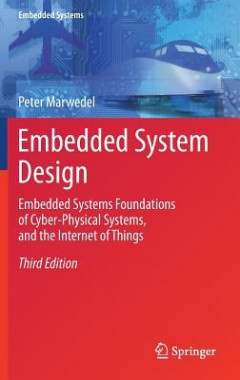
Embedded system design: embedded systems, foundations of cyber-physical syste…
Contents: 1 Introduction 1.1 History of terms 1.2 Opportunities 1.3 Challenges 1.4 Common characteristic 1.5 Curriculum integration of embedded systems 1.6 Design flow 1.7 Structure of this book 1.8 Problems 2 Specifications and modeling 2.1 Requirements 2.2 Models of computation 2.3 Early design phases 2.4 Communiacating finite state machines (CFSMs) 2.5 Data fl…
- Edition
- Third edition
- ISBN/ISSN
- 9783319560434
- Collation
- xxiv, 423 hal.; ilus.; 24 cm
- Series Title
- --
- Call Number
- 004.21 MAR e

Cyber-physical systems: integrated computing and engineering design
Contents: SECTION I BASICS 1 Cyber-physical systems concepts 2 Cyber-physical systems: design challenges 3 Mobile cyber physical systems SECTION II DESIGN PRINCIPLES 4 Cyber-physical system controls 5 Apprenticeship learning for cyber-physical system intelligence 6 Application of HDP-HMM in recognition of dynamic hand gestures 7 On modeling issues in cyber-physical systems …
- Edition
- --
- ISBN/ISSN
- 9781466577008
- Collation
- xx, 378 hal.; ilus.; 26 cm
- Series Title
- --
- Call Number
- 629.8 FEI c

Cyber-physical system design with sensor networking technologies
Contents: 1 Wireless sensor networks: basics and fundamentals 2 Cyber-physical systems: basics and fundamentals 3 Integrating wireless sensor networks and cyber-physical systems: challenges and opportunities 4 Enabling cyber-physical systems architectural design with wireless sensor network technologies 5 Cyber security in cyber-physical systems: on false data injection attacks in t…
- Edition
- --
- ISBN/ISSN
- 9781849198240
- Collation
- xxii, 340 hal.; ilus.; 24 cm
- Series Title
- IET control engineering series 96
- Call Number
- R004.6 ZEA c
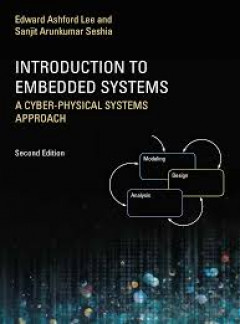
Introduction to embedded systems: a cyber-physical systems approach
Contents: 1 Introduction 1.1 Applications 1.2 Motivating example 1.3 The design process 1.4 Summary I Modeling dynamic behaviors 2 Continuous dynamics 2.1 Newtonian mechanics 2.2 Actor models 2.3 Properties of systems 2.4 Feedback control 2.5 Summary Exercises 3 Discrete dynamics 3.1 Discrete systems 3.2 The notion of state 3.3 Finite-state machines 3.4 Ex…
- Edition
- Second Edition
- ISBN/ISSN
- 9780262533812
- Collation
- xxii, 538 hal.; ilus.; 24 cm
- Series Title
- --
- Call Number
- 006.22 LEE i
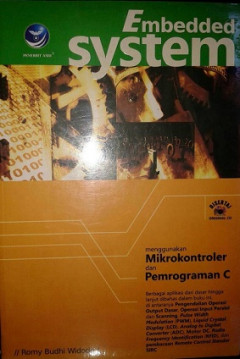
Embedded system menggunakan mikrokontroler dan pemrograman C
Daftar isi: PERIHAL DASAR TENTANG MIKROKONTROLER 1.1 Arsitektur mikrokontroler 1.2 Kaki kaki (pin out ) mikrokontroler 1.3 Perangkat keras dan perangkat lunak pemograman 1.4 Simpulan 1.5 Latihan 1.6 Umpan balik PEMOGRAMAN C PADA MIKROKONTROLER MCS-51 2.1 Perndahuluan 2.2 dasar pemograman 2.3 perulang 2.4 Fungsi 2.5 port keluaran kikrokontroler 2.6 driver output mikrokontroler…
- Edition
- Ed. I
- ISBN/ISSN
- 9789792907056
- Collation
- xxii, 250 hlm.; ilus.; 23 cm
- Series Title
- --
- Call Number
- 629.8 ROM e
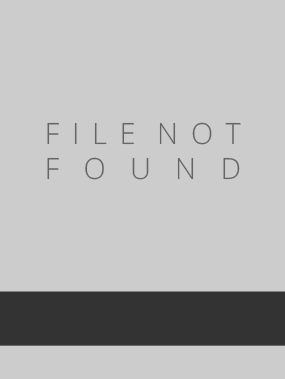
Embedded systems with ARM cortex-M Microcontrollers in assembly languange and C
Table of Contents See a Program Running Data Representation ARM Instruction Set Architecture Arithmetic and Logic Load and Store Branch and Conditional Execution Structured Programming Subroutines 64-bit Data Processing Mixing C and Assembly Interrupts Fixed-point and Floating-point Arithmetic Instruction Encoding and Decoding …
- Edition
- Second Edition
- ISBN/ISSN
- 9780982692639
- Collation
- xiii, 664 hal.; ilus.; 25 cm
- Series Title
- --
- Call Number
- 005.262 YIF
 Computer Science, Information & General Works
Computer Science, Information & General Works  Philosophy & Psychology
Philosophy & Psychology  Religion
Religion  Social Sciences
Social Sciences  Language
Language  Pure Science
Pure Science  Applied Sciences
Applied Sciences  Art & Recreation
Art & Recreation  Literature
Literature  History & Geography
History & Geography